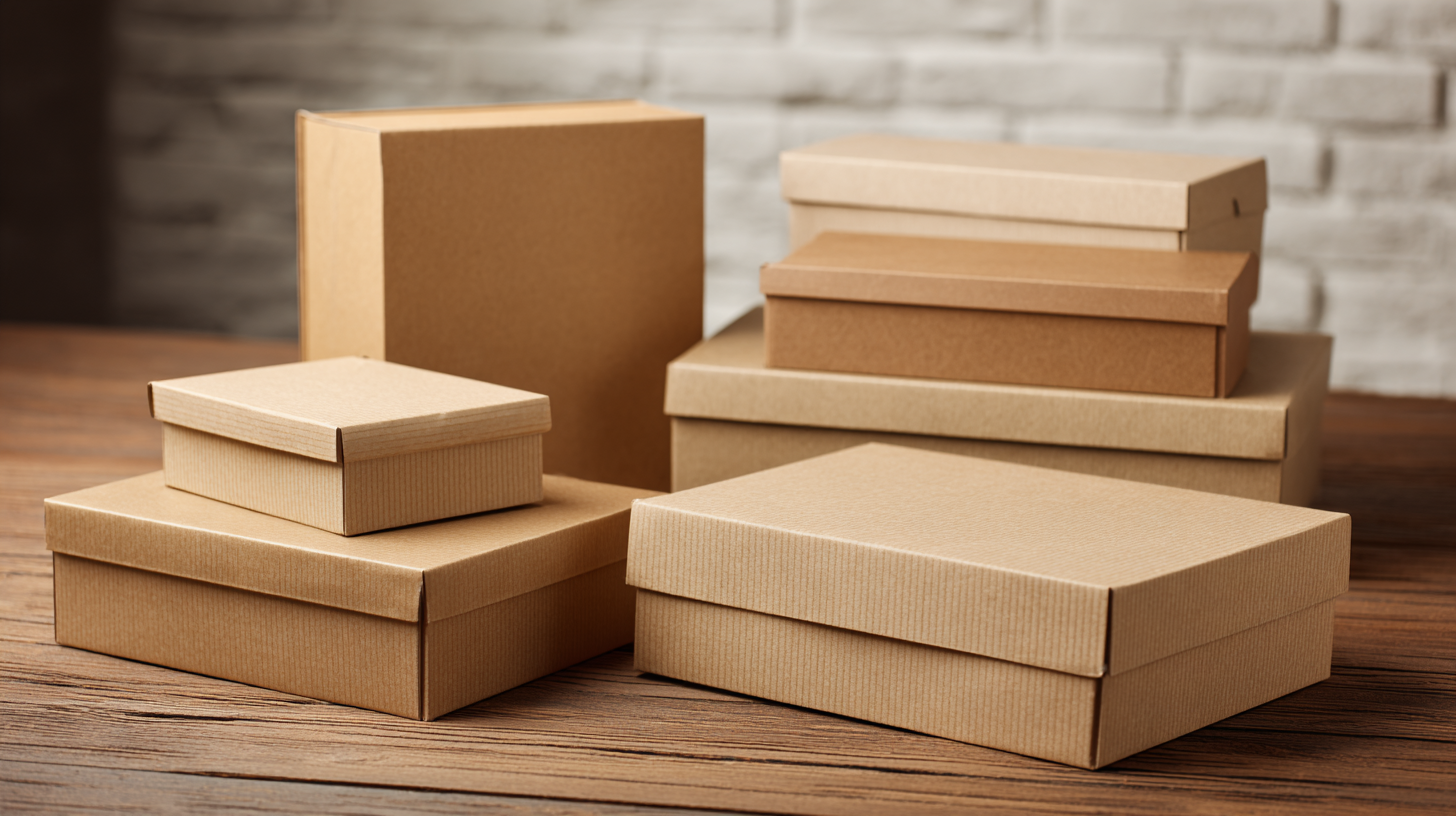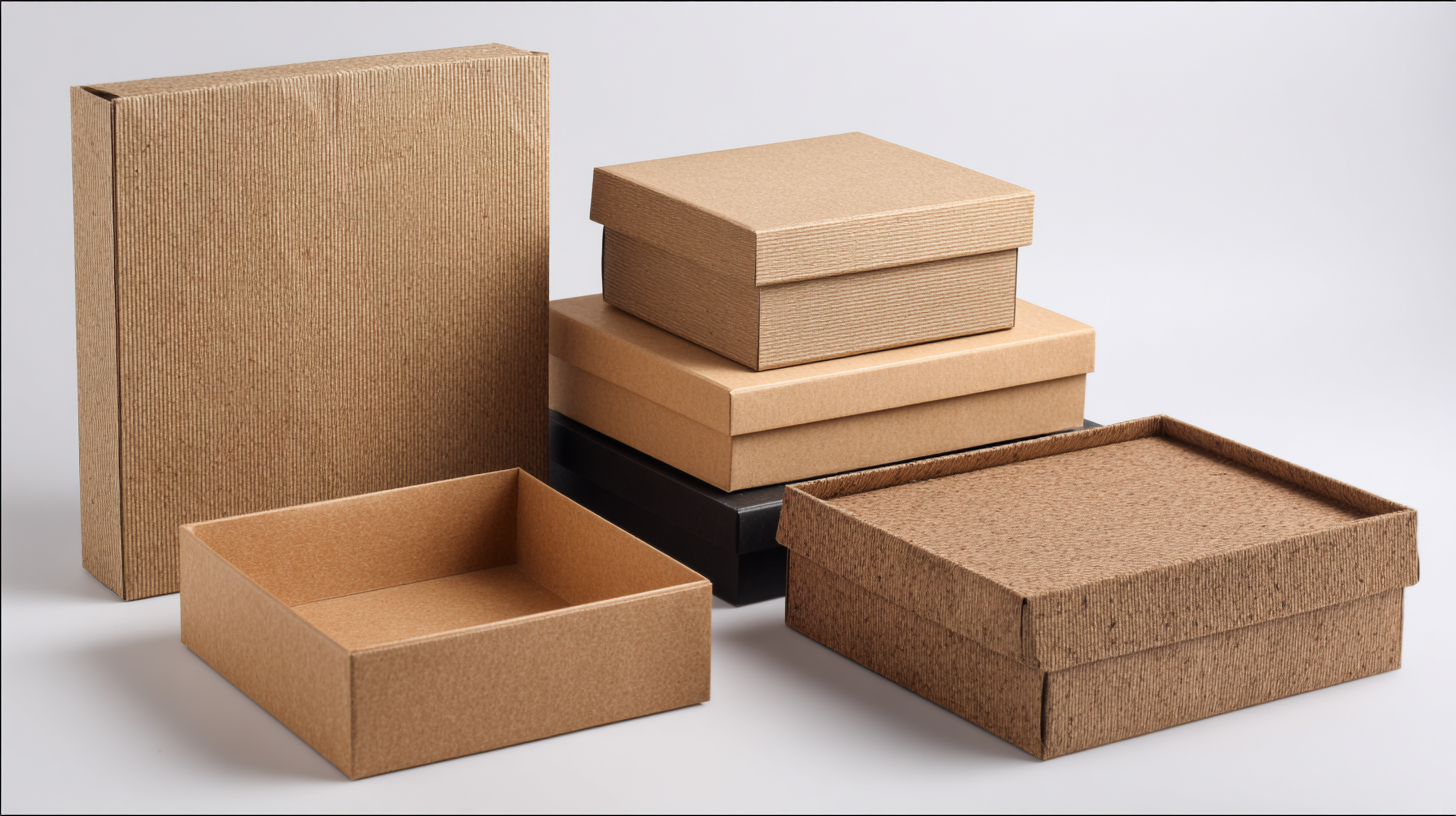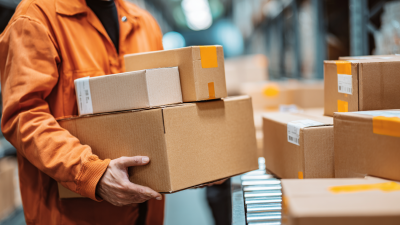Exploring Sustainable Innovations in the Packaging Boxes Industry: A Comprehensive Guide
The packaging boxes industry is undergoing a transformative shift towards sustainability, driven by increasing consumer demand for environmentally friendly solutions. According to a report by Smithers Pira, the global sustainable packaging market is projected to reach $400 billion by 2027, with a significant portion attributed to innovations within packaging boxes. As companies strive to reduce their carbon footprint, the adoption of biodegradable materials, reusable designs, and smart technology is on the rise. This shift not only meets the growing regulatory requirements but also addresses the expanding expectations of eco-conscious consumers. By examining the latest advancements and trends, businesses can harness these sustainable innovations in the packaging boxes sector to enhance their market position and contribute positively to the environment.

Understanding the Importance of Sustainability in Packaging Boxes
Sustainability has become a pivotal consideration in the packaging boxes industry, highlighting the growing consumer demand for eco-friendly options. Research indicates that a significant number of consumers prioritize sustainable packaging choices, with many expressing a desire for packaging that is not only environmentally responsible but also intelligent and efficient. This shift in consumer sentiment underscores the importance of integrating sustainability into packaging design, prompting businesses to explore innovative and cost-effective solutions that align with these values.
Moreover, the evolving preferences of European consumers reveal a nuanced landscape where sustainability and affordability play crucial roles. While there is a clear push for sustainable packaging, the economic realities faced by consumers are reshaping their purchasing decisions. Businesses must navigate this delicate balance, ensuring that their packaging solutions not only meet environmental standards but are also accessible to the average consumer. By investing in sustainable innovations, companies can significantly enhance their brand perception, attract eco-conscious consumers, and contribute to broader environmental goals in the packaging boxes sector.
Exploring Sustainable Innovations in the Packaging Boxes Industry
Innovative Materials: Options for Eco-Friendly Packaging Solutions
As the packaging boxes industry evolves, the shift toward eco-friendly materials is transforming the market landscape. Recent reports indicate that over 60% of consumers prefer sustainable packaging options, prompting brands to explore innovative materials such as biodegradable plastics, recycled paper, and even plant-based alternatives. For instance, a study from Smithers Pira noted that the global sustainable packaging market is expected to reach $500 billion by 2027, with significant growth driven by consumer demand for environmentally responsible products.
To adopt these eco-friendly options effectively, brands should consider incorporating recycled materials into their packaging designs. Using recycled paper and cardboard not only reduces waste but also lowers production costs. Moreover, companies like Tetra Pak have started utilizing plant-based materials, which can drastically cut down carbon footprints. Tips for businesses include sourcing local materials to minimize transportation emissions and opting for designs that require less material without compromising durability.
While transitioning to sustainable packaging solutions, it's essential to communicate these efforts to consumers. Transparency about the sourcing and environmental benefits of innovative materials can enhance brand loyalty and trust. Additionally, implementing a take-back program for used packaging can further promote sustainability, encouraging consumers to return their boxes for recycling.
| Material Type | Renewability | Recyclability | Biodegradability | Common Uses |
|---|---|---|---|---|
| Recycled Paper | Yes | Yes | Yes | Shipping Boxes, Certificates |
| Mushroom Packaging | Yes | Yes | Yes | Protective Packaging |
| Bioplastics | Yes | Depends on Type | Yes | Food Packaging, Cosmetics |
| Bamboo Packaging | Yes | Yes | Yes | Gift Boxes, Crafts |
| Glass Packaging | No | Yes | Yes | Beverage Bottles, Jars |
Design Strategies for Reducing Waste in Packaging Production
 In the packaging boxes industry, reducing waste is crucial for fostering sustainable practices. According to a report by Smithers Pira, the global sustainable packaging market is projected to reach $500 billion by 2026, driven by increasing consumer demand for eco-friendly solutions. Design strategies focused on minimizing waste can play a pivotal role in achieving this target. One effective approach is the use of minimalist designs that require fewer materials without sacrificing durability and functionality. For instance, adopting designs like flat-fold boxes can significantly reduce the volume of materials used and optimize shipping efficiencies.
In the packaging boxes industry, reducing waste is crucial for fostering sustainable practices. According to a report by Smithers Pira, the global sustainable packaging market is projected to reach $500 billion by 2026, driven by increasing consumer demand for eco-friendly solutions. Design strategies focused on minimizing waste can play a pivotal role in achieving this target. One effective approach is the use of minimalist designs that require fewer materials without sacrificing durability and functionality. For instance, adopting designs like flat-fold boxes can significantly reduce the volume of materials used and optimize shipping efficiencies.
Moreover, incorporating recycled and biodegradable materials into packaging designs can considerably lower environmental impact. A survey conducted by the Sustainable Packaging Coalition revealed that over 70% of consumers prefer products with packaging that is either recyclable or made from recycled content. This factor has led companies to innovate, integrating post-consumer recycled materials into their packaging processes. Additionally, utilizing digital printing technologies allows for precise production runs that minimize excess material waste, aligning with the industry's shift towards sustainability. By embracing these design strategies, companies can not only reduce waste but also meet the growing market demand for sustainable packaging solutions.
Implementing Circular Economy Principles in Packaging Design
In today's rapidly evolving packaging industry, implementing circular economy principles is essential for sustainable innovations. The adoption of Extended Producer Responsibility (EPR) guidelines, as highlighted by recent discussions, provides a systematic approach for businesses, particularly in low- and middle-income countries, to enhance their packaging designs. This framework encourages companies to take full responsibility for their products’ lifecycle, promoting recyclability and resource efficiency from the very beginning of the design process.
Moreover, the shift toward a circular economy necessitates innovative strategies that redefine packaging materials and functionality. Companies can leverage principles of circular design to not only minimize waste but also create packaging that facilitates reuse and recycling. Transforming the packaging landscape involves understanding the entire lifecycle of materials used and integrating sustainable practices into logistics and product design. As regulations get stricter, such as the forthcoming rules aimed at improving recycling and reuse, the pressure is on for businesses to rethink their strategies and align with environmentally responsible goals. This transition not only benefits the planet but also unlocks new business value in an increasingly eco-conscious market.

Regulatory Considerations and Consumer Trends in Sustainable Packaging
The shift towards sustainable packaging is being significantly influenced by regulatory considerations that companies must navigate. Governments worldwide are increasingly implementing stringent regulations aimed at reducing plastic waste and promoting eco-friendly materials. These regulations often mandate the use of recyclable, compostable, or biodegradable materials, compelling companies to innovate in their packaging solutions. As a result, businesses must stay informed about local, national, and international guidelines to ensure compliance, which can be a catalyst for developing more sustainable practices.
In addition to regulatory pressures, consumer trends are driving the demand for sustainable packaging. Modern consumers are more eco-conscious and prioritize brands that demonstrate a commitment to sustainability. This shift is evident in the growing market for products that utilize recycled or minimal packaging and in the demand for transparency regarding sourcing and manufacturing processes. Companies that actively communicate their sustainable practices not only enhance their brand image but also attract a loyal customer base that values environmental responsibility. As consumer expectations continue to evolve, businesses in the packaging industry must be agile and responsive to maintain competitiveness while aligning with sustainable practices.
Related Posts
-

Why Creative Boxes Are Revolutionizing Packaging in the E Commerce Industry
-

Harnessing Supply Boxes Trends at the 138th Canton Fair in 2025 for Industry Growth
-

What is the Importance of Custom Design Shipping Boxes for Your Business
-

Transform Your Brand with Unique Design Packaging Boxes That Stand Out
-

The Future of Shipping Boxes and Packaging Exploring Sustainable Solutions and Market Trends
-

Essential Tips for Choosing the Right Boxes Supplies for Your Business Needs
